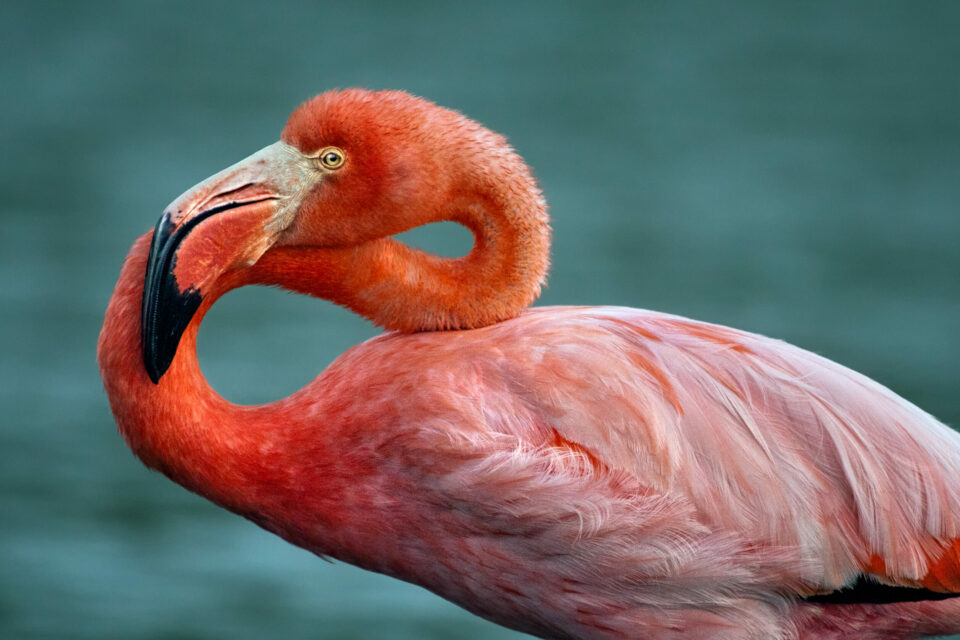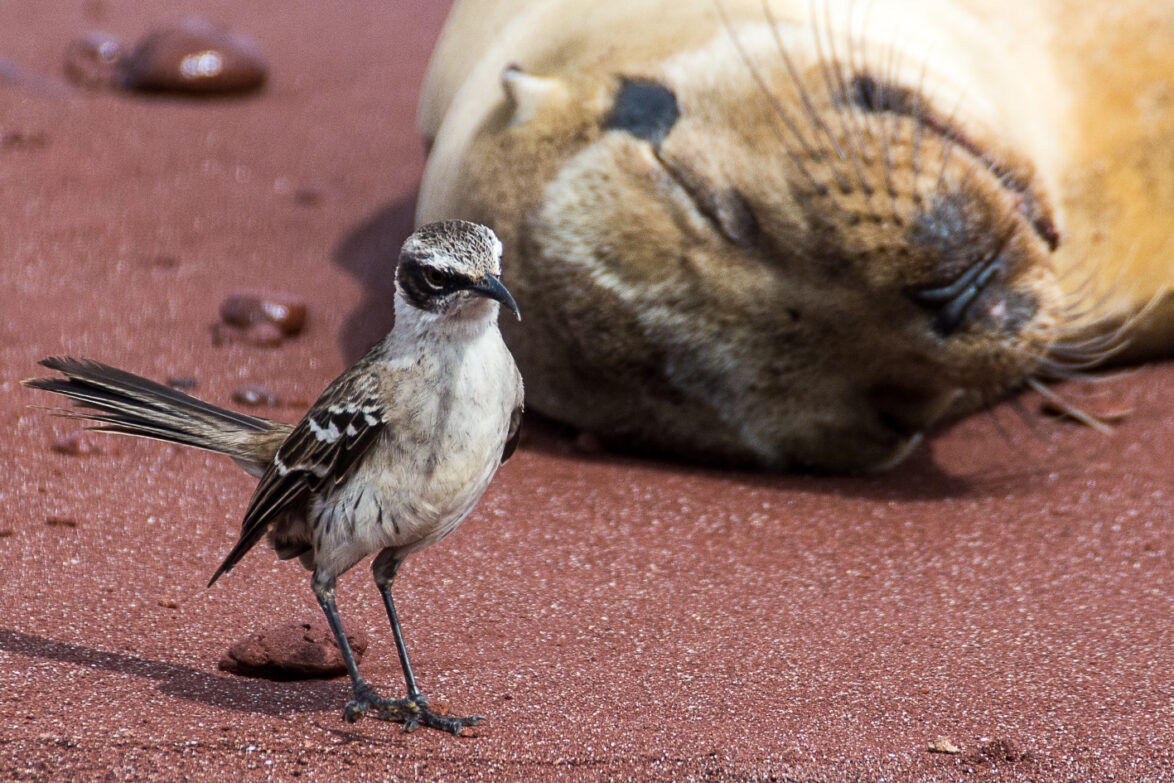
Island overview
Rabida’s red colouring is due to high levels of iron in the lava that formed the island, giving it an almost Martian appearance. Most of the coastline is rocky, with the sandy beach on the northeast side providing the only access point for tourists.
Brown pelicans can be seen nesting near the beach, and behind the beach there is a saltwater lagoon where flamingos and other wading birds feed. Blue-footed and Nazca boobies are a common sight on the coast, while inland you can see Darwin’s finches, yellow warblers, mockingbirds and Galapagos doves. Marine iguanas and lava lizards are also present on Rabida. There is a dive site at the northern end of the island, with the chance to spot sea lions, sea turtles, eagle rays, fur seals and the occasional reef shark or penguin.

Wildlife highlights


American flamingo

Marine iguana

Blue-footed booby
Conservation challenges
Rabida is one of many islands in Galapagos to have suffered the damaging effects of invasive species introduced by humans. During the 1970s goats were twice introduced to Rabida and then subsequently eradicated, and in 2011 introduced black rats were successfully eradicated from the island. The ecosystem is now recovering, as evidenced by the observation in 2022 of flamingos breeding on Rabida for the first time in over 20 years.


